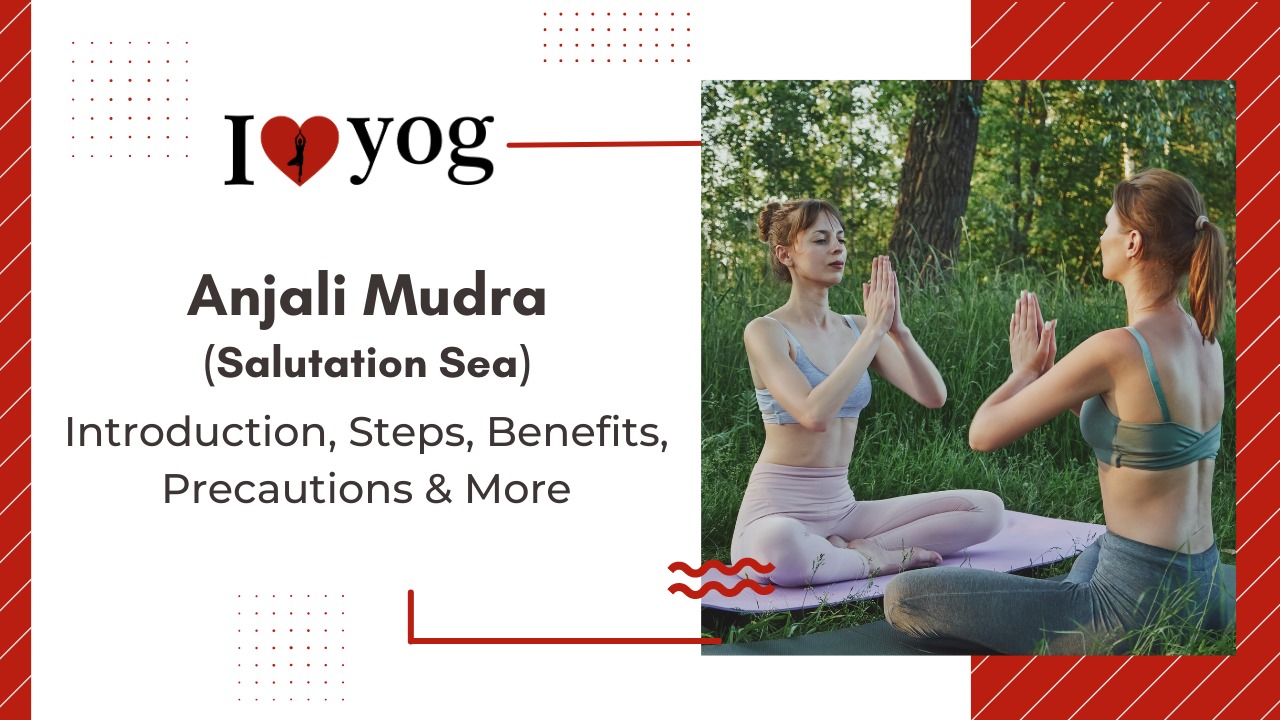Introduction of Anjali mudra
Añja Mudra is a hand motion that is mostly connected to Indian culture, both in Asia and beyond.It is a part of Indian classical dance postures such as Bharatanatyam, yoga practice, and forms part of the greeting Namaste. Anjali Mudra is a type of non-verbal, visual communication to the audience used in performing arts. It is one of 24 samyukta mudras of the Indian classical arts. The brahmanjali is one of several variations of the Anjali Mudra.
Ajali is a Sanskrit word that refers to the cavity created by the clasping of the hands between the palms to hold and offer flowers or water, or to donate or receive something. When hands are clasped together and raised, it signifies respect, reverence, blessing, greeting or some form of supplication. It derives from anj and means to honour or celebrate. Anjali means a divine sacrifice, a gesture of reverence.
Mudra means “seal” or “sign”. Thus, the term means “salutation seal.”
Steps of Anjali mudra
- Sit in Sukhasana or another easy or comfortable position that you feel comfortable in.
- Stretch your spine.
- Diversify your neck by tilting your chin slightly inward.
- Open your palms.
- Slowly move your hands together in the centre of your chest.
- Place your hand in contact with your Anahata chakra, located in your heart chakra.
- In this position you transfer your consciousness to your heart centre.
- Your fingers should always be pointing up.
- Press your palms together.
- Increases pressure build-up over each finger and thumb to their tips.
- Also let the borders of the fingers adjoin each other.
- Now close your eyes.
- But closing your eyes is not mandatory. But closing your eyes will allow you to turn your awareness inward.
- Repeat several times.
- In this gesture you are trying to fully align your right and left sides along with logic and intuition, masculine and feminine, strength and tenderness.
- Now gently press your thumbs into your breastbone as if you are ringing your heart’s doorbell to open it upwards.
- Move your shoulder blades back from the inside to open your chest.
- Align your elbows with your wrists, in a straight line.
- Stay in this pose for a while and feel the balance.
Benefits of Anjali mudra
- Creates flexibility in wrists and elbows.
- It acts as a stimulator for the Anahata chakra.
- Over time, it also stimulates and activates the Anahat chakra.
- It calms the mind.
- It relieves stress.
- It improves your focus.
- It promotes inner awareness.
- Connects the functioning of the cerebral hemispheres and improves brain functions and its coordination.
- Balances the functioning of the glands, often those of the pituitary and thyroid glands.
- It improves the circulation of oxygen and nutrients from the heart to the body and also balances breathing patterns.
- It makes the mind think positively by correcting our thought process
Precautions to be taken Anjali mudra
- Students with shoulder and wrist injuries or stiff-arm injuries should avoid stretching their arms overhead or even twisting their shoulders in Anjali Mudra.
FAQs
Who should perform this mudra?
Students with shoulder and wrist injury or any injury with stiff.
Can pregnant women perform it?
Yes, they can perform this mudra by sitting in a comfortable position.
Which chakra is stimulated in this mudra?
Anahata chakra is get stimulated.
Name of posture in which Anjali mudra can be used?
While Anjali Mudra can be performed on its own from any seated or standing pose, the gesture is also incorporated into physical yoga practice as part of many full-body asanas, including
- Anjaneyasana (lunge) – with arms overhead
- Hanumanasana (monkey pose)
- Malasana (garland pose)
- Matsyasana (fish pose) – an advanced variant
- Prasarita Padottanasana (wide-legged forward bend) – an advanced variant with hands behind the back
- Rajakapotasana (Pigeon Pose/King Pigeon Pose) – anjali mudra in Pigeon pose
- Tadasana/samasthiti (mountain pose) – a variant of the pose used during sun salutation sequences
- Utkatasana (chair pose, literally “fierce pose”), arms overhead
- Urdhva Hastasana (upward salute/extended mountain pose) – arms overhead
- Virabhadrasana I (warrior I) – arms overhead
- Vrikshasana (tree pose)


